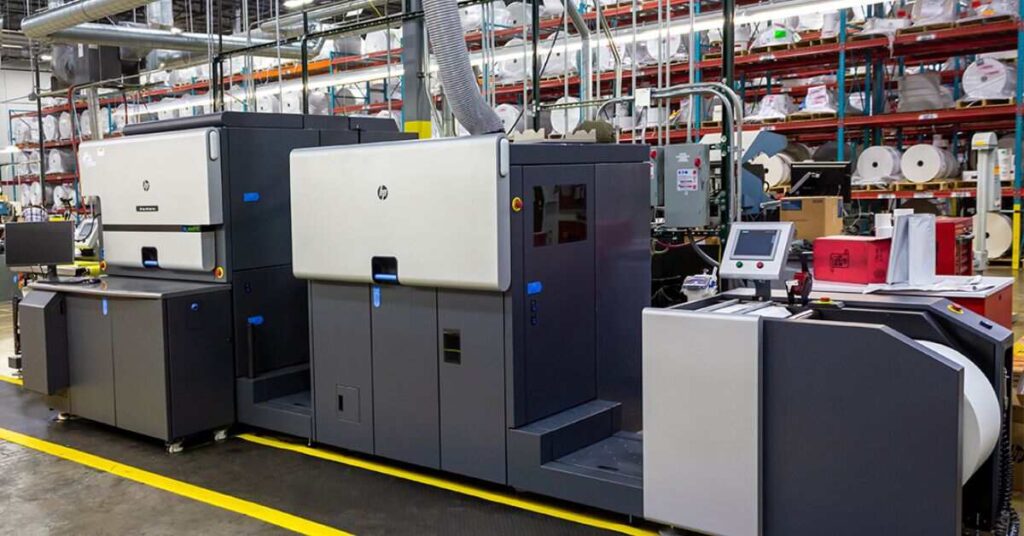Imagine a shopping experience where prices update in real time, and product information is at your fingertips. No more squinting at tiny price tags or hunting down a store clerk for details. Welcome to the future of retail, where digital label solutions are transforming the way we shop. Discover How Digital Label Solutions Enhance Interactive Shopping Experiences.
In this deep dive, we’ll explore how these innovative technologies are revolutionizing the retail landscape, creating more engaging and interactive shopping experiences for consumers while streamlining operations for retailers. Buckle up, because we’re about to embark on a journey through the cutting-edge world of digital labeling.
How does a digital label work?
At its core, a digital label is a small electronic display that can be updated remotely. But don’t let its size fool you – these little devices pack a powerful punch when it comes to enhancing the shopping experience.
Digital labels come in various types, with the most common being:
- E-paper displays: These use electronic ink technology, similar to e-readers, offering excellent readability and low power consumption.
- LCD screens: Providing vibrant colors and animation capabilities, perfect for eye-catching promotions.
- OLED displays: Offering high contrast and wide viewing angles, ideal for premium product lines.
The magic happens behind the scenes, where a central control system sends updates to these labels via wireless communication. This could be through:
- Radiofrequency (RF) networks
- Infrared signals
- Bluetooth Low Energy (BLE)
- Wi-Fi networks
Power-wise, these labels are marvels of efficiency. Many use button cell batteries that can last for years, while some advanced models even incorporate energy harvesting technology, drawing power from ambient light or radio waves. Discover How Digital Label Solutions Enhance Interactive Shopping Experiences.
How do electronic shelf labels work?
Electronic Shelf Labels (ESLs) are the retail world’s answer to the digital revolution. They’re the foot soldiers of the digital label army, stationed at the frontlines of product shelves.
Here’s a breakdown of their operation:
- Central Management System: This is the brain of the operation, where all pricing and product information is stored and managed.
- Communication Infrastructure: A network of wireless access points or base stations scattered throughout the store.
- ESL Tags: The individual labels are attached to each product shelf.
When it’s time for an update, the central system sends out the new information. This data travels through the store’s communication network, reaching each relevant ESL tag. In the blink of an eye, hundreds or even thousands of prices can be updated simultaneously.
But it’s not just about prices. ESLs can display a wealth of information:
- Product details
- Stock levels
- Promotional offers
- QR codes for additional online information
| “ESLs have revolutionized our pricing strategy. We can now respond to market changes in real-time, ensuring we’re always competitive.” – Sarah Johnson, Operations Manager at TechMart |
Enhancing In-Store Communication
Digital label solutions are like having a personal shopping assistant for every product in the store. They’re transforming in-store communication in ways we never thought possible.
Imagine walking down an aisle and seeing not just prices, but:
- Detailed product specifications
- Customer reviews
- Suggested pairings or accessories
- Real-time stock levels
And that’s just the beginning. With multilingual support, stores can cater to diverse customer bases without cluttering shelves with multiple language tags. A simple tap or scan, and the information appears in the customer’s preferred language. Discover How Digital Label Solutions Enhance Interactive Shopping Experiences.
QR codes on digital labels open up a world of possibilities. Customers can scan to:
- Watch product demo videos
- Access detailed nutritional information
- Check product origin and sustainability credentials
- Add items to their virtual shopping list
Interactive features take things a step further. Touchscreen ESLs allow customers to browse different product variants, compare features, or even place orders for out-of-stock items right on the shelf.
Personalization: The Holy Grail of Retail
In the age of big data, personalization is king. Digital label solutions are the knights carrying this banner into the brick-and-mortar realm.
By integrating with loyalty programs and mobile apps, digital labels can offer personalized experiences like:
- Tailored promotions based on shopping history
- Customized product recommendations
- Special birthday or anniversary offers
Imagine walking into a store and seeing labels light up with offers just for you. It’s not science fiction – it’s the power of digital label solutions at work. Discover How Digital Label Solutions Enhance Interactive Shopping Experiences.
Here’s a quick look at how personalization can boost sales:
| Personalization Strategy | Average Sales Increase |
|---|---|
| Tailored Promotions | 15-20% |
| Custom Recommendations | 10-15% |
| Special Event Offers | 25-30% |
Streamlining Price Management
Gone are the days of manually updating thousands of price tags. Digital label solutions have turned this tedious task into a breeze.
With centralized price control, retailers can:
- Update prices across multiple stores instantly
- Implement dynamic pricing strategies based on demand
- Match competitors’ prices in real-time
- Reduce pricing errors and associated costs
Let’s crunch some numbers:
- A typical supermarket might have 30,000+ products.
- Manual price changes can take up to 2 minutes per tag.
- That’s potentially 1,000 hours of labor for a store-wide update!
With digital labels, the same update can be done in seconds. It’s not just about saving time – it’s about staying competitive in a fast-paced market.
Facilitating Omni-channel Retailing
In today’s retail landscape, the line between online and offline shopping is blurring. Digital label solutions are the bridge connecting these two worlds.
Here’s how they’re facilitating omnichannel retailing:
- Click-and-Collect Optimization: ESLs can guide staff to quickly locate items for online orders, speeding up the pickup process.
- Inventory Transparency: Real-time stock levels displayed on labels help manage customer expectations and reduce frustration.
- Price Consistency: Ensure in-store prices match online prices, building trust with customers.
- Endless Aisle: Out of stock? No problem. ESLs can display QR codes for customers to order items for home delivery right from the shelf.
By creating a seamless experience across all channels, retailers can capture sales that might otherwise be lost to online competitors.
Sustainability: The Green Side of Digital
In an era of increasing environmental awareness, digital label solutions are helping retailers reduce their carbon footprint.
Consider this:
- A medium-sized retailer might use 50,000 paper labels per year.
- That’s equivalent to about 6 trees.
- Over 5 years, switching to digital labels could save 30 trees per store.
But it’s not just about saving trees. Digital labels also:
- Reduce waste from discarded paper labels
- Lower transportation emissions from frequent label deliveries
- Use energy-efficient technology, with some ESL lasting 5+ years on a single battery
For eco-conscious consumers, this commitment to sustainability can be a major draw.
Case Study: MegaMart’s Digital Transformation
Let’s look at how digital label solutions transformed operations for MegaMart, a fictional large-scale retailer:
Before Digital Labels:
- 50,000 products across 100 stores
- Weekly price updates took 200 labor hours per store
- 2% error rate in manual price changes, leading to customer complaints
After Implementing Digital Labels:
- Price updates now take less than 1 hour per store
- Error rate reduced to 0.01%
- 15% increase in customer satisfaction scores
- 8% boost in overall sales
MegaMart’s CEO, Jane Smith, remarks:
| “The ROI on our digital label investment was clear within the first year. But the real value has been in the enhanced shopping experience we can now offer our customers.” |
Future Trends in Digital Label Solutions
The world of digital labeling is evolving rapidly. Here’s a glimpse into the future:
- Augmented Reality Integration: Imagine pointing your smartphone at a label and seeing a 3D model of the product or a virtual try-on.
- AI-Powered Pricing: Labels that adjust prices in real-time based on factors like weather, local events, or even individual customer preferences.
- Advanced Analytics: ESLs that track customer interactions, providing invaluable data on shopping behaviors and product interest.
- Interactive Packaging: Digital labels extend beyond shelves to product packaging, offering an interactive experience even after purchase.
As technology advances, the possibilities are endless. The future of shopping is digital, interactive, and personalized – and digital label solutions are leading the charge.
Challenges and Considerations
While the benefits of digital label solutions are clear, implementation isn’t without its challenges:
- Initial Costs: The upfront investment can be significant, especially for larger retailers.
- Staff Training: Employees need to be trained on the new system, which can take time and resources.
- System Security: As with any digital system, there’s a need for robust security measures to prevent hacking or price manipulation.
- Consumer Adaptation: Some customers, particularly older demographics, may need time to adjust to the new technology.
However, for most retailers, the long-term benefits far outweigh these initial hurdles.
FAQs
Ans: They include real-time price updates, reduced labor costs, improved accuracy, and enhanced customer experience.
Ans: Costs vary widely based on store size and features, but typically range from $50,000 to $500,000 for initial implementation.
Ans: While they’re suitable for most environments, extreme temperatures or humidity might affect some types of digital labels.
Ans: They provide more information, ensure price accuracy, and offer personalized promotions, enhancing overall shopping satisfaction.
Conclusion: The Future is Digital
As we’ve discovered, digital label solutions are more than just a technological novelty – they’re a transformative force in retail. From enhancing the shopping experience to streamlining operations and promoting sustainability, these innovative tools are reshaping the way we buy and sell.
For retailers looking to stay competitive in an increasingly digital world, exploring digital label solutions isn’t just an option – it’s a necessity. The future of retail is interactive, personalized, and data-driven. Digital labels are the key to unlocking this future.






